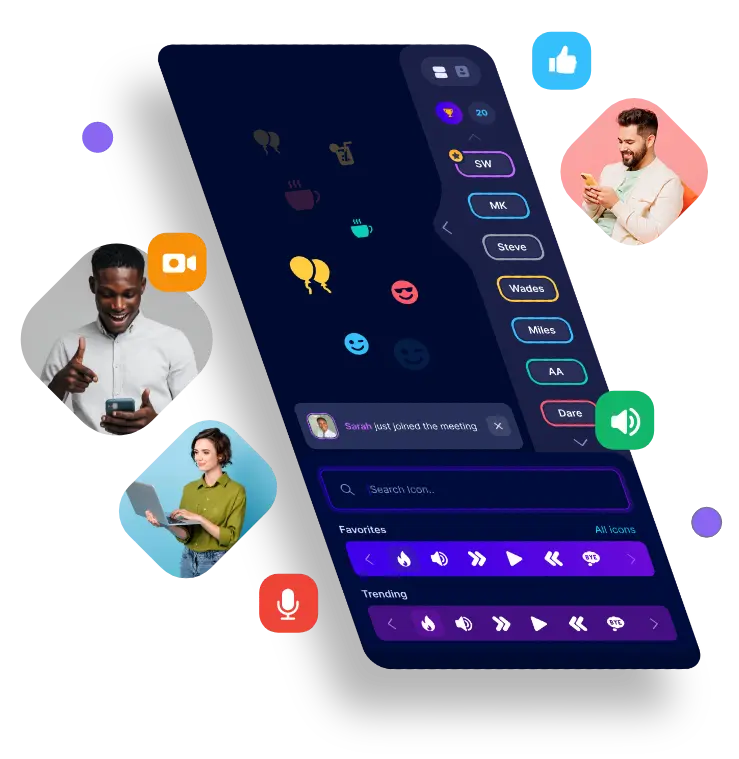
Are you facing the challenge of onboarding new employees remotely?
We explore the concept of remote onboarding, its importance, and the challenges it presents. From the lack of face-to-face interaction to the difficulty in building rapport, we discuss the obstacles that come with remote onboarding.
Discover the best practices for remote onboarding, including establishing clear communication channels and conducting virtual team-building activities. Learn how to create an effective remote onboarding plan for your new hires.
What is Remote Onboarding?
Remote onboarding is the process of integrating new employees into a company's culture and operations, specifically tailored for remote work environments.
It plays a crucial role in ensuring that new team members seamlessly adapt to the virtual workspace, fostering team dynamics and collaboration. Learn more about effective onboarding practices for new remote employees.
Through remote onboarding, individuals gain the necessary knowledge and tools to navigate the digital infrastructure and utilize various technologies efficiently within the organization. It sets the foundation for establishing a strong connection between employees and the company's overarching organizational culture, even from a distance. The careful orchestration of virtual training sessions, video meetings, and digital resources forms the backbone of successful remote onboarding processes.
Why is Remote Onboarding Important?
Remote onboarding is crucial for fostering a sense of belonging, enhancing productivity, and maintaining company culture in hybrid work settings.
It serves as the bridge that connects the new hire with the organizational mission and values, ensuring they align with the company's vision. Through a designated mentor, remote employees receive guidance and support, aiding in their integration into the team seamlessly. The emphasis on clear documentation during onboarding not only streamlines processes but also sets expectations, giving employees a roadmap for success. This comprehensive approach not only ensures that employees are equipped to excel in their roles but also cultivates a strong sense of community, regardless of physical distance.
What are the Challenges of Remote Onboarding?
Remote onboarding presents challenges such as limited face-to-face interaction, access to resources, and building rapport in virtual environments.
One of the hurdles faced in remote onboarding is the struggle with communication barriers. Without the ability to have quick in-person conversations or read body language cues, misinterpretations might arise. Additionally, feedback mechanisms can be less immediate, leading to potential delays in addressing concerns. The accessibility to necessary resources can be limited, impacting the new hire's ability to swiftly obtain crucial information or tools for their tasks. Establishing transparency and fostering collaboration amidst these obstacles becomes pivotal for successful integration."
Lack of Face-to-Face Interaction
One of the primary challenges of remote onboarding is the lack of face-to-face interaction, necessitating reliance on technology and video conferencing software for effective communication.
Remote onboarding's transition into a virtual realm has reshaped traditional recruitment practices, pushing organizations to explore new avenues of interaction. Utilizing virtual communication methods such as video conferencing tools like Zoom or Microsoft Teams has become essential for facilitating the seamless integration of new hires into their roles. These platforms not only bridge the physical gap but also foster a sense of connection and belonging. Incorporating communication channels like a dedicated Slack channel enhances collaboration and communication among team members, ensuring a smoother onboarding process that helps boost new hire proficiency.
Limited Access to Resources
Another challenge in remote onboarding is the limited access to resources, including company intranet, training materials, and structured plans like the 30/60/90-day plan.
Having a reliable company intranet plays a key role in providing new hires with essential information, documents, and updates crucial for successful integration into the organization's culture. Through easily accessible training programs, employees can swiftly grasp required skills and knowledge, helping them adapt quicker to their roles.
Structured plans, such as the well-known 30/60/90-day plan, offer a roadmap for both the new hire and the employer, outlining objectives and milestones for early success. Mentorship and development opportunities embedded in these plans further enhance the employee experience and aid in long-term growth within the company.
Difficulty in Building Rapport
Building rapport remotely poses a challenge as establishing connections, fostering inclusion, and finding a culture buddy becomes more complex without physical proximity.
During virtual onboarding, the lack of face-to-face interaction can hinder the natural flow of relationship-building that typically occurs in a physical office setting. Communication barriers such as time zone differences, technological glitches, and limited informal interactions can impede the development of trust and interpersonal connections. In this context, incorporating a structured cultural alignment program can play a crucial role in bridging these gaps and fostering a sense of belonging among new employees.
What are the Best Practices for Remote Onboarding?
Effective remote onboarding practices include clear communication channels, access to tools, setting expectations, assigning mentors, team-building activities, and regular feedback sessions to ensure new hire success.
Communication clarity is paramount to fostering a sense of belonging and understanding within the remote team. Ensure that new hires have the necessary tools and resources to fulfill their roles efficiently, promoting engagement and productivity. Encourage mentorship programs that provide guidance and support, helping newcomers navigate the virtual work environment seamlessly.
Engage in team-building exercises that strengthen relationships and create a cohesive remote community. Implement feedback mechanisms to address any issues promptly, enhancing retention and optimizing performance.
Read our post on 5 Innovative Strategies to Boost Remote Team Engagement.
Establish Clear Communication Channels
Establishing clear communication channels is vital in remote onboarding to convey values, facilitate collaboration, and maintain transparency within the virtual environment.
Efficient communication ensures that new hires are aligned with the company's core values, enabling a seamless integration into the organizational culture. By leveraging technology such as video conferencing, messaging platforms, and project management tools, teams can bridge the physical gap and foster a sense of belonging and teamwork. Utilizing collaboration tools promotes continuous feedback, enabling swift iterations and improvements in the onboarding process, ultimately leading to increased productivity and employee satisfaction.
Provide Access to Necessary Tools and Resources
Providing access to essential tools and resources is paramount in remote onboarding to ensure efficiency, productivity, and seamless integration into the virtual work environment.
Equipping new members with the necessary technology not only helps them navigate remote work effectively but also ensures they can collaborate seamlessly with the team. By providing access to collaboration platforms and communication tools, new hires can engage with their colleagues, participate in meetings, and contribute to projects from anywhere. Offering mentorship programs and documented resources aids in their skill development and understanding of the company culture, fostering a sense of belonging and boosting their confidence in their roles.
Set Clear Expectations and Goals
Setting clear expectations and goals during remote onboarding aligns new employees with the company's organizational mission, enabling feedback-driven growth and performance evaluation.
Clearly defined expectations and objectives not only provide a roadmap for new hires but also cultivate a sense of purpose and direction in a virtual workspace. By establishing these benchmarks early on, organizations can ensure that their remote employees are aware of what is expected from them, fostering productivity and accountability.
This practice enhances communication channels between managers and remote team members, allowing for real-time feedback on performance and progress. Through regular check-ins and assessments, managers can address any challenges or gaps in understanding promptly, leading to more efficient onboarding processes and smoother integration into the team.
Assign a Mentor or Buddy
Assigning a mentor or buddy to new employees fosters mentorship, cultural integration, values alignment, and knowledge sharing essential for remote onboarding success.
Having a designated mentor provides an invaluable support system for newcomers, offering guidance on navigating challenges and easing the transition period into the company's ethos. These mentors play a pivotal role in sharing best practices, company values, and insider knowledge, which are crucial for the engagement and retention of new hires.
Through regular check-ins and open communication channels, mentors ensure that new employees feel connected and enabled, boosting their confidence and productivity during the onboarding process.
Conduct Virtual Team Building Activities
Engaging in virtual team building activities promotes collaboration, strengthens team dynamics, and enhances social interactions crucial for remote employees in the virtual workplace.
Virtual team-building exercises play a vital role in fostering a sense of belonging and unity among team members who may be geographically scattered. These activities help break down barriers and build trust among colleagues from diverse backgrounds, contributing to a more inclusive work environment.
By encouraging participation in virtual team-building activities, companies can create opportunities for employees to connect on a personal level, improving communication and reducing feelings of isolation commonly associated with remote work. These exercises facilitate the sharing of ideas, experiences, and best practices, ultimately enhancing the overall productivity and effectiveness of the team.
Schedule Regular Check-ins and Feedback Sessions
Scheduling periodic check-ins and feedback sessions with leadership fosters employee success, engagement, and continuous improvement in the remote onboarding process.
By maintaining an open line of communication and creating a space for dialogues on challenges and achievements, employees can feel supported and motivated to excel in their roles. Through these sessions, leaders have the opportunity to provide guidance, clarify expectations, and ensure that organizational values are upheld. This transparent exchange of ideas and feedback not only boosts morale but also cultivates a sense of belonging and alignment with the company's mission.
How to Create an Effective Remote Onboarding Plan?
Developing an effective remote onboarding plan involves identifying key objectives, defining steps, assigning roles, and incorporating feedback for continuous improvement in a virtual environment.
To start with, clear goal setting is essential in remote onboarding. This involves outlining specific targets and milestones for new hires to achieve within a defined timeline. Role assignment plays a crucial part in ensuring that each team member knows their responsibilities and expectations. Integrating technology and tools into the onboarding process is vital for efficient communication and training sessions. Feedback integration is key for monitoring progress, addressing issues, and providing support where needed. Implementing strategies for continuous improvement helps adapt the onboarding plan based on evolving needs and challenges.
Identify Key Objectives and Goals
Identifying key objectives and goals is the foundation of an effective remote onboarding plan, enabling feedback-driven adjustments to address challenges and optimize the onboarding process.
In a remote onboarding scenario, setting clear objectives and goals not only guides the new employees but also provides a roadmap for mentors to support them effectively. Clear communication around these goals ensures that everyone is on the same page, fostering a sense of cohesion and direction within the virtual onboarding environment.
By defining objectives, the organization can better evaluate the success of the onboarding process and make informed decisions to enhance it. Regular feedback from both mentors and new hires plays a crucial role in identifying potential challenges early on, paving the way for timely interventions and adjustments.
A well-thought-out onboarding plan with defined objectives helps streamline the process, making it more efficient and engaging for all parties involved. It allows for the optimization of resources, time, and efforts, leading to a smoother transition for the new hires into the company's culture and operations.
Determine the Necessary Steps and Timeline
Mapping out necessary steps and establishing a timeline for remote onboarding ensures a structured approach, leveraging technology and tools to streamline the process for new employees.
When determining the steps for remote onboarding, it is crucial to consider the organizational culture and leadership style of the company.
By aligning the onboarding process with the values and goals of the organization, new employees can quickly integrate into the team.
Utilizing tools such as video conferencing platforms and online training modules can enhance communication and engagement during the onboarding process.
Creating a detailed timeline with specific milestones ensures that new hires have a clear roadmap for their integration into the company culture.
Assign Roles and Responsibilities
Assigning clear roles and responsibilities during remote onboarding clarifies expectations, promotes accountability, and facilitates mentorship opportunities for successful integration.
When employees are onboarded remotely, the efficiency of the process greatly depends on how well-defined and communicated these roles are from the start. By clearly outlining who is responsible for what tasks, there is a reduction in confusion and overlap, leading to smoother operations within the virtual workspace.
This not only fosters a sense of ownership and collaboration among team members but also sets a solid foundation for effective teamwork. With each individual understanding their role clearly, they can focus on honing their skills and contributing meaningfully to the collective goals of the organization.
Incorporate Feedback and Continuous Improvement
Integrating feedback mechanisms and embracing continuous improvement practices are essential in optimizing remote onboarding processes in a virtual environment to enhance employee experience and success.
Constructive feedback plays a crucial role in remote onboarding, guiding organizations to refine their procedures for smoother transitions and better outcomes. By implementing a structured feedback loop, companies can identify pain points and areas of improvement, fostering employee engagement and boosting retention.
Zoom meeting engagement through gamification has been our focus at Townhall, and why we've designed our Zoom engagement-boosting app solution.
This iterative approach paves the way for ongoing enhancements, ensuring that the onboarding process remains relevant and effective over time. It's through this feedback-driven evolution that companies can foster a culture of continuous growth and development, aligning their onboarding practices with evolving employee needs.
Frequently Asked Questions
What is the importance of effective onboarding practices for new remote employees?
Effective onboarding practices for new remote employees are crucial as they help in setting the right tone, building trust, and ensuring a smooth transition into the company’s culture and work processes. It also helps in reducing turnover rates and increasing employee retention.
How can effective onboarding practices benefit remote employees?
Effective onboarding practices provide remote employees with the necessary information, resources, and tools to perform their job effectively. This helps in increasing their productivity, engagement, and satisfaction in their new role.
What are some key components of effective onboarding practices for new remote employees?
Some key components of effective onboarding practices for new remote employees include clear communication, proper training and orientation, providing access to necessary tools and resources, fostering a sense of community, and setting clear expectations and goals.
How can a company create an effective onboarding plan for new remote employees?
To create an effective onboarding plan for new remote employees, a company should involve the HR department, managers, and team members in the process. It should also include a well-designed orientation program, remote-specific training, and regular check-ins to provide support and feedback.
What are some challenges that may arise in onboarding new remote employees?
Some challenges that may arise in onboarding new remote employees include difficulty in building relationships and trust, lack of face-to-face interaction, communication barriers, and ensuring they have access to necessary resources and information.
How can a company ensure a successful onboarding process for new remote employees?
To ensure a successful onboarding process for new remote employees, a company should establish a clear onboarding timeline and goals, provide regular feedback and support, and continuously evaluate and adapt the onboarding process based on feedback from both the employee and the company.

